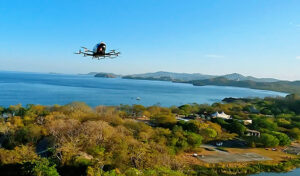Timber roadmap aims to reduce emissions from UK construction
A new roadmap to increase use of timber in the construction of homes and buildings was unveiled yesterday, set out by the government in a move designed to reduce emissions and reach net zero.
Around 25% of the UK’s greenhouse gas emissions are from the built environment, and larger buildings can store up to 400% more carbon when built out of engineered timber products rather than concrete.

Timber in construction can reduce the full carbon impact of the built environment, which is made up of both operational carbon from the type of energy or heating systems inside the building and the embodied carbon resulting from the manufacture, maintenance and disposal of the construction products that it is made from. The use of timber can reduce these embodied emissions in a single building by 20% to 60%.
Where timber has been harvested from sustainably managed forests, it also act as a carbon store, locking away carbon for the duration of that product’s life. At the individual building level, carbon storage is around 50% higher in timber framed homes than in masonry homes and can be up to 400% higher for larger buildings that use engineered timber products such as Cross-Laminated Timber (CLT) instead of concrete.
However, in 2019, only 9% of English new build homes were timber framed, leading the Climate Change Committee to recommend that government develop new policies to increase the use of wood in construction.
Key actions set out in the plan include:
- Improving data on timber and whole life carbon
- Promoting timber as a construction material
- Boosting skills, capacity and competency across the supply chain
- Increasing the supply of sustainable timber products
- Addressing fire safety concerns to safely expand the use of engineered mass timber
- Building collaboration with insurers, lenders, and warranty providers
- Promoting innovation and high performing timber construction systems
Forestry Commission Chief Executive Richard Stanford said: ‘If we are to achieve net zero we must produce more timber through home grown trees and lock up carbon using the timber in our buildings. We need to boost productive forestry in England to support timber security and reduce our over reliance on imports at the same time as tackling our nature crisis by improving biodiversity, improving water quality and giving people access to green spaces.
‘We look forward to working closely with partners across the timber, forestry and construction industries in this hugely important area of our work for years to come.’













